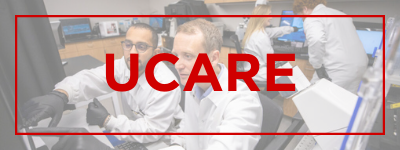UCARE: Undergraduate Creative Activities and Research Experiences

UCARE: Research Products
Date of this Version
Spring 4-2018
Document Type
Poster
Citation
Using 3D Models and Virtual Reality (VR) to Foster Learning of Carcass Anatomy. UCARE Student: Renae Sieck, Facultry Advisor: Ashu Guru. UCARE Poster, University of Nebraska-Lincoln, April 2018.
Abstract
In meat science and carcass anatomy, an often-debated topic is the methodology educators should follow for effective and efficient learning of carcass anatomy among students. Many traditional learning environments utilize monolithic methods for teaching anatomy that fail to engage students or pedagogically enhance their cognitive development to the fullest potential. Access is also limited because of the need for specialized facilities’ and equipment. We are interested in understanding and measuring the success of learning tools such as Virtual Reality (VR) and 3D Visualization in student learning. Our study’s results would be useful to indicate if student attitudes and student performance which is measured as knowledge gain are improved in comparison to learning methods that utilize only textbooks and practical laboratory sessions. Our results would help modern curriculums for educators across the globe. The findings could result in considerable cost-savings as the learning methods we examine can reach larger populations of learners anytime, anyplace, and anywhere. This would also increase access to information for high school students and well as providing participant training in a workplace environment. The 3D technologies we review are far easier to scale since the traditional carcasses are costly, impose food safety hazards and can only be “preserved for a limited period”.
Included in
Beef Science Commons, Curriculum and Instruction Commons, Educational Methods Commons, Food Science Commons, Instructional Media Design Commons, Meat Science Commons


Comments
Copyright 2018 Renae Sieck